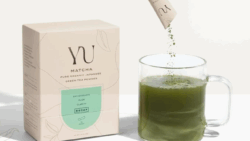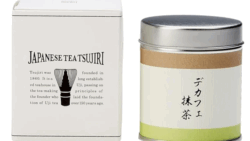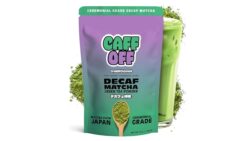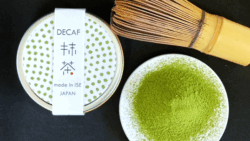- Welcome to the Wonderful World of Matcha!
- Matcha’s Amazing Journey Through Time
- Matcha vs. Green Tea: What’s the Real Difference?
- A Simple Guide to Matcha Grades
- How to Spot Amazing Matcha
- Your Matcha Toolkit: The Essentials
- How to Make the Perfect Bowl of Matcha (Step-by-Step!)
- More Than a Drink: Discover Matcha-Infused Treats
- Why Matcha Is So Good for You
- Easy Matcha Recipes to Try Today!
Welcome to the Wonderful World of Matcha!
Have you ever seen that vibrant, green powder that’s taking cafes by storm? That’s matcha! It’s a special type of powdered green tea with a rich history in Japan. Unlike regular green tea where you throw away the leaves, with matcha, you drink the entire leaf. This means you get a powerful boost of all the amazing nutrients and antioxidants the tea plant has to offer. Matcha has a smooth, earthy flavor with a touch of sweetness. Its beautiful green color and ability to provide a calm, focused energy make it a favorite for many. That special feeling comes from a unique mix of natural caffeine and an amino acid called L-theanine. But matcha isn’t just for drinking! It’s a super versatile ingredient you’ll find in everything from lattes and smoothies to ice cream and cakes.
Matcha’s Amazing Journey Through Time
Matcha’s story began centuries ago in China, where tea leaves were ground into a powder and whipped into a frothy drink. In the 12th century, Buddhist monks brought this tradition to Japan, where it was perfected. Preparing and drinking matcha became a core part of Zen Buddhism and the famous Japanese tea ceremony, making it a treasured part of the culture. Japanese tea masters dedicated themselves to creating the perfect matcha: smooth, sweet, and brilliantly green. What was once a special drink for monks and nobles is now loved by people all over the world in countless delicious ways.
Matcha vs. Green Tea: What’s the Real Difference?
While matcha and green tea come from the same plant, they are surprisingly different! Think of them as cousins. Regular green tea is grown in the sun. When you make a cup, you steep the leaves in hot water and then remove them. Matcha is made from tea plants that are grown in the shade for a few weeks before harvest. This special treatment boosts the chlorophyll (which makes it super green!) and gives it that unique savory flavor called “umami.” After harvest, the leaves are ground into an ultra-fine powder. When you drink matcha, you’re consuming the whole leaf, which is why its flavor and health benefits are so much more powerful.
A Simple Guide to Matcha Grades
Ready to choose your matcha? You’ll mostly see two main types: ceremonial and culinary grade. It’s simpler than it sounds! Ceremonial Grade is the highest quality, made from the youngest tea leaves. It has a delicate, naturally sweet flavor and is perfect for sipping on its own, whisked with hot water. Culinary Grade has a stronger, more robust flavor that’s designed to shine in recipes. It’s the perfect choice for making lattes, smoothies, or baking your favorite green treats. Don’t let its name fool you—a good culinary matcha can still make a wonderful daily drink!
How to Spot Amazing Matcha
Want to make sure you’re getting the good stuff? Here are a few simple tips. First, look at the color! High-quality matcha should be a bright, electric green. A dull, yellowish color often means it’s old or lower quality. Next, check the texture. It should be incredibly fine and silky, like baby powder. Finally, give it a sniff. Good matcha has a fresh, sweet, and slightly grassy smell. While the best matcha often comes from Japan (especially the Uji region), remember that a super-low price tag can be a red flag. Quality matcha takes a lot of care to produce, and the amazing taste is worth it!
Your Matcha Toolkit: The Essentials
To whip up the perfect bowl of matcha the traditional way, you just need a few key tools. A matcha bowl (chawan) is wide to give you plenty of room for whisking. The most important tool is the bamboo whisk (chasen), which is specially designed to create a smooth, frothy tea. A bamboo scoop (chashaku) helps you measure the perfect amount. But don’t worry if you don’t have these! You can easily get started with a small bowl or mug and use a small kitchen whisk or an electric milk frother. Using a small sifter to break up clumps before whisking is also a great tip for a perfectly smooth drink.
How to Make the Perfect Bowl of Matcha (Step-by-Step!)
Making matcha is a simple, calming ritual. Here’s how you do it: 1. Sift the Powder: Sift 1-2 bamboo scoops (about 1 teaspoon) of matcha into your bowl. This simple step prevents clumps. 2. Add Hot Water: Pour in about 2 ounces (1/4 cup) of hot water. For the best taste, avoid boiling water—around 175°F (80°C) is perfect. 3. Whisk it Up: Grab your whisk and mix vigorously in a zigzag or “W” motion for about 20 seconds. Keep going until the tea is smooth and topped with a layer of delicate foam. That’s it! You can now enjoy your perfect bowl of matcha. For a latte, just use this as your “matcha shot” and top with steamed milk and your favorite sweetener.
More Than a Drink: Discover Matcha-Infused Treats
Matcha’s magic doesn’t stop at the tea bowl! Today, you can find it in all sorts of delicious treats. Creamy matcha lattes are a cafe classic, and refreshing matcha ice cream is the perfect dessert. In the baking world, matcha adds a beautiful green color and an amazing flavor to cakes, cookies, and brownies. You’ll also find it blended into healthy smoothies, mixed into yogurt, and even used in savory dishes like soba noodles. These yummy products are a fantastic way to enjoy the taste of matcha any time of day.
Why Matcha Is So Good for You
Matcha is a true superfood, packed with health benefits. Because you consume the whole leaf, you get way more nutrients than in regular green tea. It’s loaded with antioxidants that help protect your body’s cells. It also gives you a special kind of “calm energy.” Thanks to an amino acid called L-theanine, matcha can help you feel alert and focused without the jitters you can get from coffee. Studies also show that it can boost your metabolism and support a healthy heart. It’s a delicious way to do something great for your body!
Easy Matcha Recipes to Try Today!
Ready to start experimenting? Matcha is incredibly easy to use in your own kitchen. Simple Matcha Latte: Make a matcha shot, then pour in steamed milk and sweeten it just how you like. For a summer treat, pour it over ice! Morning Boost Smoothie: Add a teaspoon of matcha to your favorite smoothie. It pairs perfectly with banana, spinach, and almond milk. Yogurt & Oatmeal Topper: Sprinkle a little matcha into your morning yogurt or oatmeal for a boost of flavor and energy. Once you start, you’ll find endless ways to add a little green magic to your favorite recipes!






